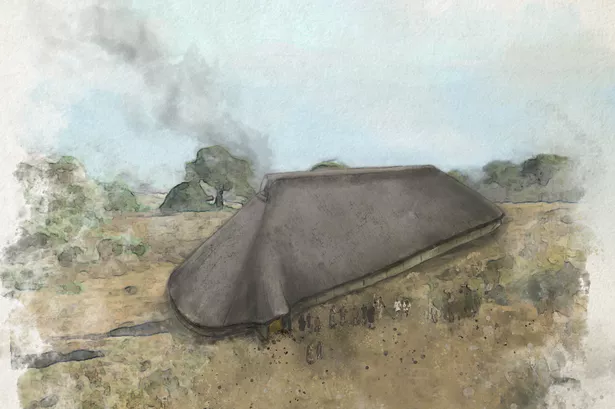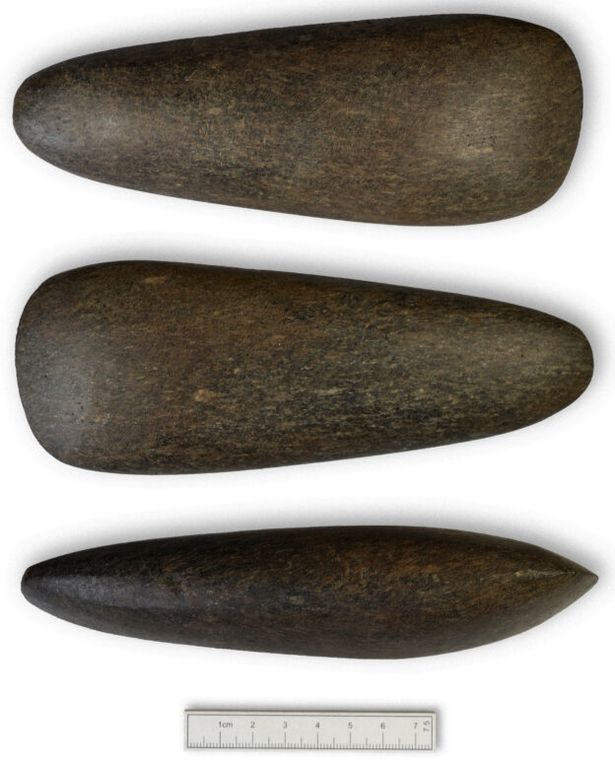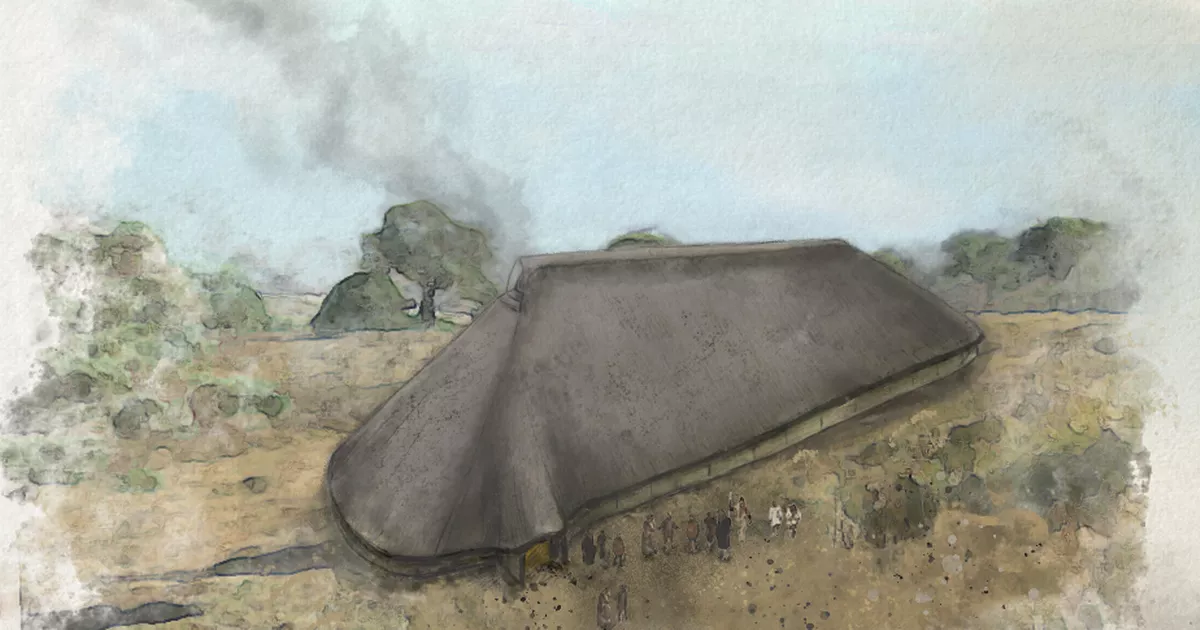Built around 4000 BC by early farming communities, the hall measured an impressive 35 metres long and 9 metres wide. Archaeologists found evidence of a early Neolithic timber hall in Angus that was 35 metres long and 9 metres wide(Image: Guard Archaeology)
Archaeologists found evidence of a early Neolithic timber hall in Angus that was 35 metres long and 9 metres wide(Image: Guard Archaeology)
Archaeologists in Scotland have uncovered remarkable evidence of a vast and sophisticated timber hall dating back around 6,000 years, providing fresh insight into the lives and festivities of some of the country’s earliest farming communities.
The discovery was made during excavations at the site of new football pitches near Carnoustie High School, in Angus. Archaeologists from Glasgow-based Guard Archaeology described the building as the largest early Neolithic timber hall ever discovered in Scotland.
The hall measured an impressive 35 metres (115 feet) long and 9 metres (30 feet) wide. Constructed around 4000 BC, this monumental structure was crafted from oak timber, featuring opposed doorways towards one end and walls made of wattle and daub panels supported by sturdy wooden posts.
Its roof, extending protectively over the walls, was held up by massive paired timber posts, while further internal postholes and narrow channels marked out internal partitions, indicating a carefully subdivided space.
“This monumental timber hall, completely alien to the culture and landscape of the preceding Mesolithic era, was erected by one of the very first groups of farmers to colonise Scotland, in a clearing within the remains of natural woodland,” explained Beverley Ballin Smith, one of the report’s co-authors.
 Artefacts from across Scotland, including fragments of Arran pitchstone, a garnet-albite-schist axe, and smoky quartz, were also found at the site(Image: Guard Archaeology)
Artefacts from across Scotland, including fragments of Arran pitchstone, a garnet-albite-schist axe, and smoky quartz, were also found at the site(Image: Guard Archaeology)
“It was fully formed, architecturally sophisticated, large, complex and required skills of design, planning, execution and carpentry.”
What makes the Carnoustie discovery truly exceptional, however, is the existence of a second, smaller hall located nearby. While still substantial in its own right at nearly 20 metres (66 feet) by 8 metres (26 feet), this companion building sets the Carnoustie site apart from other early Neolithic halls previously found in Scotland, which typically stood alone within newly cultivated farmland.
Evidence recovered from the smaller hall includes a hearth with charred remains of cereal grains and hazelnut shells, clear indications of communal feasting and seasonal celebrations.
Archaeologists suggest autumn, with the abundance of hazelnuts, was likely an important time for festivities at the Carnoustie site.
The strategic location of these halls, positioned prominently and elevated within the landscape, also hints at their role as gathering points.
Archaeologists believe they may have been situated close to ancient routeways, naturally attracting groups from across the region at different times of the year.
Further reinforcing this idea, the excavation revealed carefully placed deposits of artefacts sourced from distant parts of Scotland. Among these were fragments of Arran pitchstone, a garnet-albite-schist axe, and smoky quartz from the Highlands.
 Join the Daily Record WhatsApp community!
Join the Daily Record WhatsApp community!
Get the latest news sent straight to your messages by joining our WhatsApp community today.
You’ll receive daily updates on breaking news as well as the top headlines across Scotland.
No one will be able to see who is signed up and no one can send messages except the Daily Record team.
All you have to do is click here if you’re on mobile, select ‘Join Community’ and you’re in!
If you’re on a desktop, simply scan the QR code above with your phone and click ‘Join Community’.
We also treat our community members to special offers, promotions, and adverts from us and our partners. If you don’t like our community, you can check out any time you like.
To leave our community click on the name at the top of your screen and choose ‘exit group’.
If you’re curious, you can read our Privacy Notice.
Other materials such as agate, quartz, and chalcedony were gathered more locally, demonstrating the halls’ far-reaching appeal and significance to communities across Scotland.
In particular, stone tools deposited at the site provided “tantalising traces” of the halls’ possible role in the spiritual beliefs and rituals of the local community, according to the archaeologists involved.
Angus Council commissioned the excavation as part of preparations for the construction of new football pitches.
The groundbreaking discovery has provided historians and archaeologists with invaluable insight into Scotland’s early Neolithic period, a transformative era spanning from around 6,100 to 4,500 years ago when pioneering farmers from mainland Europe began settling the region.
